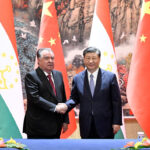The agriculture sector carries great economic and social relevance for Brazil, which is the fourth-largest food-producing country in the world.
Brazil’s main agricultural policy is rural credit. Government expenses tied to credit subsidies are high: R$ 13.6 billion have been allocated to the 2023/2024 Brazilian Agricultural Plan, of which R$ 8.5 billion were designated exclusively to subsidize the National Plan for Family Farming (Programa Nacional de Fortalecimento da Agricultura Familiar – PRONAF).[5],[6] This sizeable investment should be used to benefit society in the form of productivity gains, technology adoption, and reduced deforestation. As the country prepares for a climate transition, it is key to understand who benefits from the rural credit policy and who still does not have access to it.
Agricultural policy must prioritize small producers to ensure that rural credit meets the needs of producers who face financial constraints in their attempts to modernize production and conserve native vegetation.[7] In this brief, researchers from Climate Policy Initiative/Pontifical Catholic University of Rio de Janeiro (CPI/PUC-Rio) reveal that access to credit for family farmers is both limited and unequal. Among family producers, credit is highly concentrated in larger properties, in the southern region, and in grain production.
Only 15% of family farmers get credit. Credit is taken out by 20% of producers whose properties span from 10 to 100 hectares, while this number drops to only 10% of producers whose properties are up to four hectares in size. Credit access also shows relevant geographic differences, as 29% of producers in the South access credit, while in the North only 9% of them do. Under PRONAF—the main line of credit for these producers—the average amount per hectare for contracts in the South (R$ 1,451) is eighteen times higher than in the North (R$ 83) of Brazil.
Resources are also concentrated when comparing different crops. Corn, wheat, and soy receive the most financing, with PRONAF credit accounting for more than 40% of the sales value of these products. In contrast, PRONAF accounts for less than 10% of the sales value of crops relevant to family farming, such as manioc, banana, sugarcane, cocoa, pineapple, orange, and açaí.
Given the disparities in access to credit among family farmers, public policy for these producers needs to consider differences in size, region, and product in order to expand the coverage of financial services to producers who are currently excluded. PRONAF must prioritize the most vulnerable regions and producers so that public policy can be effective in strengthening family farming, boosting economic development, ensuring food security, and promoting sustainability.
Source: Climate policy initiative
















